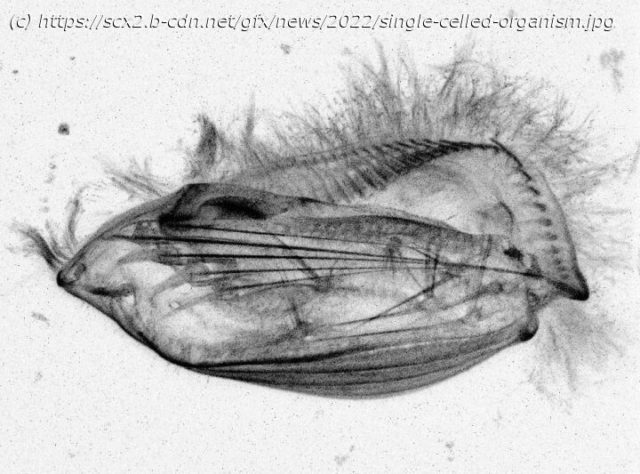Most animals require brains to run, jump or hop. The single-celled protozoan Euplotes eurystomus, however, achieves a scurrying walk using a simple, mechanical computer to coordinate its microscopic legs, UC San Francisco researchers reported on September 22, 2022, in the journal Current Biology.
October 11, 2022
Most animals require brains to run, jump or hop. The single-celled protozoan Euplotes eurystomus, however, achieves a scurrying walk using a simple, mechanical computer to coordinate its microscopic legs, UC San Francisco researchers reported on September 22, 2022, in the journal Current Biology.
Euplotes has 14 leg-like appendages, each one composed of bundles of hair-like cilia. The researchers showed for the first time that internal connections between these cilia control their motions, letting the legs move only in certain patterns and sequences. When these internal connections are disrupted, the movements of the aquatic organisms become less productive—often leading the cells to turn in circles rather than walk in a line.
„Euplotes uses these connections to facilitate an elaborate walking motion, but my suspicion is when we delve into this more, we’ll find that other cells use similar forms of computation to control more subtle processes,“ said Wallace Marshall, Ph.D., lead study author and professor of biochemistry and biophysics at UCSF.
In general, aquatic single-celled organisms don’t have legs and don’t walk—they roll, swim or slither. So when UCSF postdoctoral research fellow Ben Larson, Ph.D. spotted Euplotes scurrying around under his microscope, he at first thought he was watching insect-like animals.






